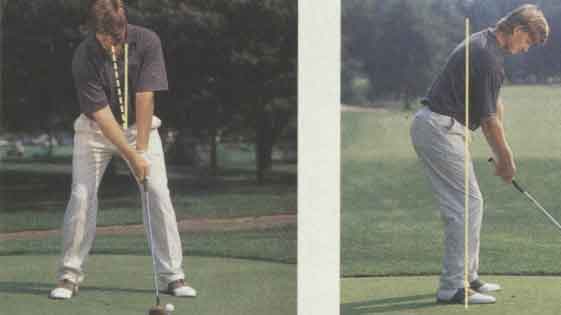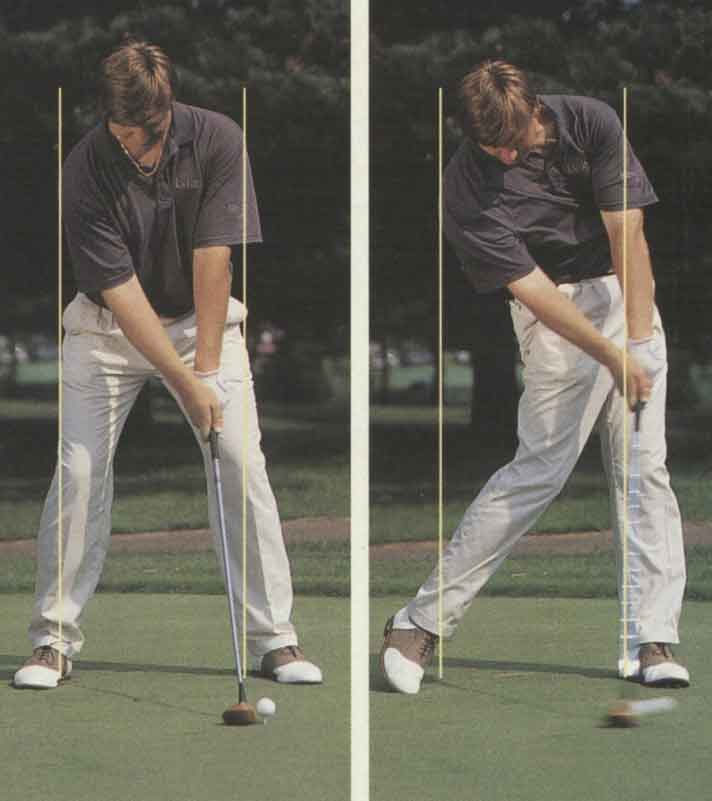
Zephyr Melton
March 12, 2025
How to cultivate a smooth swing while generating motivation? Take a page out of Ernie Els’ book.
Getty Images
Golf coaching has been evolving, but the best advice has stood the test of time. In Golf.com’s new series “The Eternal Tips”, we highlight some of the greatest advice teachers and players distributed in the Golf Magazine page. Today, we return to the June 1995 archive, where we published a story about Ernie Els’ smooth and powerful swing. If you have unlimited access to the complete Golf Magazine Digital Archive, please join InsideGolf Today; your value is only $140, only $39.99/year.
Golf has some swings Smooth. Think of Jake Knapp. Mr. and Mrs. Fred. Nelly Korda. Sam Sneider. All of these swings are as elegant as they work, and they are moves that many of us yearn for replicating. Most importantly, these fluctuations are not only Smooth – They are also powerful.
One of the first male and female halls in smooth rhythm discipline is Ernie Els. Great South African portrayed a career where his smooth and powerful moves even earned him the nickname “Big Easily”.
Back in June 1995, before his US Open Championship defense Golf Magazine Run a feature on many admirable Els swing elements. Such parts focus on his jealous rhythm and powerful driving and are broken down by legendary coach Jim Flick. View below.
How to swing like a big ease
Watch Ernie Els waving the golf club, and you can’t help but think of a later version of Sam Snead. Maybe no one has Snead with such an explosive but elegant swing. Like Snead, Els is nearly perfect in balance and timing. From start to finish, everything is in the right place and there is no overwork.
At 25, the ELS has used these three components for control, repeatable swings: rhythm, balance and timing. Every golfer hears these terms, but that’s my definition. Rhythm is a harmonious movement between the body and the club. Balance is the ability to control all parts of the body. The timing is the proper sequence of movement of body parts and clubs to maximize efficiency.
But don’t think that just swing the club at a controllable speed can be done with good rhythm, balance and timing. There are certain mechanisms that must exist in the settings and swings to set the appropriate sequence in the movement and pass the club head directly onto the ball.
In these mechanisms, adjustments may be required to meet individual needs. ELS has made some modifications from the standard setting to better adapt to his height. The result is spectacular. Here’s what you can learn from the U.S. Open Championship to improve the balance and timing of your swing.
Start balance, keep balance

Golf Magazine
What happened during the swing largely reflects what the address was created, and Ernie’s setup was almost perfect. Note that his spine is away from his target. This promotes the full upper body coil on the top of the defender and weighs on the top of the right foot. I also like the wide platform he created. Note that his heels are separated, not his toes, and he uses a little more knees than most excellent players. This wider pose and additional knee flex slightly lower his center of gravity, which helps improve the balance of tall players. Also note that his weight is balanced in front and back of his feet. Again, this creates the perfect balance when address/to be balanced, you have to start with balance.
Don’t go in
Tall golfers, in particular, tend to pull the club into the target line too early when defending. When the club goes too far, it feels heavier, which increases unnecessary tension in the arms and hands. Els avoided this problem by putting the club’s head in his hands.
The right arc makes things easier

Golf Magazine
Note that when the axis is between his arms, a line from the end of the axis of the ELS to the ground point within the target line. This puts his club head on the proper arc. The correct arc is important for rhythmic, balanced swings, because the more perpendicular the arc, the lighter the club’s head feels, and controlling it needs to be reduced. The lighter the head of the club feels, the less tension there will be on the arms and arms.
Start with swing, not turn
Rhythm and timing are enhanced by swing motion. Swing does not create tension, and turns does create tension. That’s why almost every great golfer starts his movements by swinging the club backwards instead of turning his body. Ernie started the movement by waving his arms. His body responded to the lead of the weapon. The appropriate sequence has been established, resulting in a slightly flattened club arc that descends. This helps to pass the club head slightly from inside the target line to the ball and facilitates the draw – Els’ preferred shooting shape. Keep this in mind: “Go down the low roads along the high roads.”
income

Golf Magazine
In Impact, Els is almost perfect for timing, a combination of balance and rhythm that allows the club head to pass directly to the ball. Even if his club head moves more than 100 miles per hour, his body looks relaxed. Without too much lower body twist or slipping, his weight remains the same between his feet. With the driver, you can see Ernie’s head move slightly backward. This can accommodate a slightly rising club head, entering the impact of the billiard ball. On the iron, his head doesn’t move far away so he can drop the blow. Els understands that controlling the club is the key to hitting the ball close to the target. Instead of taking control with the club to control it, he created a swing that minimizes tension and maximizes club head speed. Just like Snead’s, he should serve him as long as he plays.

Zephyr Melton
Golf.comEdit
Zephyr Melton is an assistant editor at Golf.com, where he spent his days of blogging, making and editing. He participated in the University of Texas before joining the golf team, before stopping for the Texas Golf Association, Team USA, Green Bay Packers and the PGA Tour. He assists with all mentoring, covering amateur and women’s golf. He can be contacted at zephyr_melton@golf.com.
Source link



